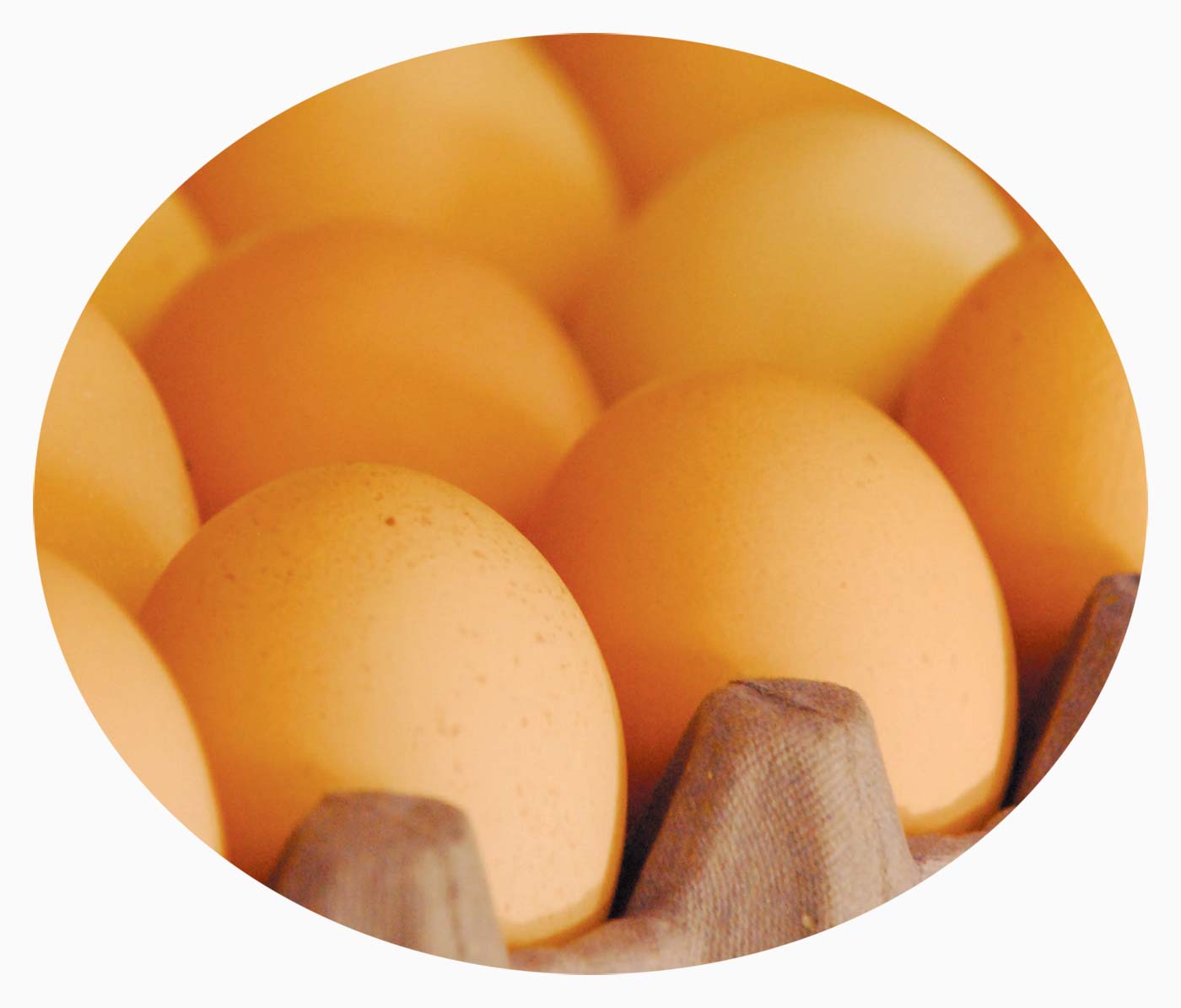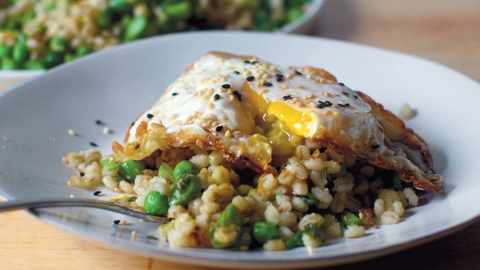Eggs
Contrary to popular belief, eggs do have a season and it begins in early spring.
What’s the Egg and Easter connection?
Eggs have long symbolized the renewal of life. Premodern and pre-Christian cultures used the egg as a symbol of fertility and the regeneration of earth that comes with springtime. Early Christians extended that concept and viewed eggs as a symbol of resurrection, applied to both Jesus Christ and the new life of his followers. Thus began eggs’ connection to Easter (and our modern egg-coloring tradition!).
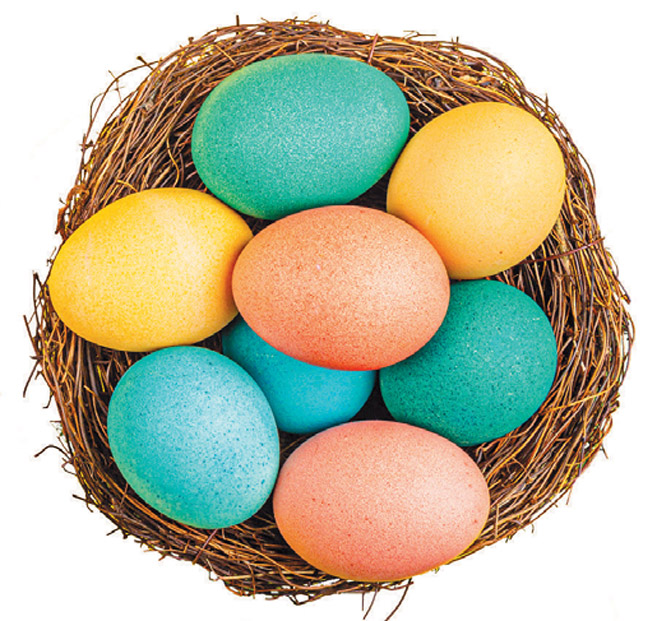
HOW TO COOK
A few of our favorite techniques, adapted from How to Boil an Egg by Rose Carrarini (Phaidon, 2013)
- Hard Boil Place eggs into a pan of cold water and bring to a boil. Reduce heat and simmer for 15—20 minutes, then drain off the hot water and replace with cold. Let stand until eggs are cool enough to peel. Note: If possible, remove eggs from the refrigerator and bring to room temperature prior to cooking.
- Scrambled Melt a piece of butter in pan over medium-low heat. Beat 3 eggs per serving with a little salt and pepper in a bowl and pour into pan. If eggs start to cook too quickly, remove the pan from burner and adjust heat. Cook gently, stirring constantly with a wooden spoon, until eggs are soft and creamy, forming a fluffy yellow mound.
- Poached Fill a pan halfway with water and bring to a boil. Add 1 tablespoon of vinegar. Stir vigorously to create a whirlpool in the center. Immediately break an egg into the whirlpool. Continue to stir gently for about 1½ minutes. Lift out the egg with a slotted spoon, capture excess water with a paper towel, and turn egg onto the plate.
season:
Year—round, but birds begin laying more eggs as the days get longer in spring, triggered by the lengthening daylight.
at the market:
Eggs sold at a supermarket are usually uniform in size and color. Open a carton purchased from a small farm or farmers’ market, though, and you may find eggs of different sizes with shell colors varying from white to brown, speckled, and blue-green. Egg size and shell color are dictated by the breed of bird that laid it.
store:
Eggs can be kept fresh in the refrigerator for up to three or four weeks, but check the “use-by” date stamped on the carton prior to use.
1 Million
Estimated number of U.S. families who enjoy the fresh eggs and fine companionship of their own backyard chickens.
Source: Backyard Poultry magazine
286
Number of eggs consumed per person in the U.S. in 2020.
Source: U.S. Poultry & Egg Association
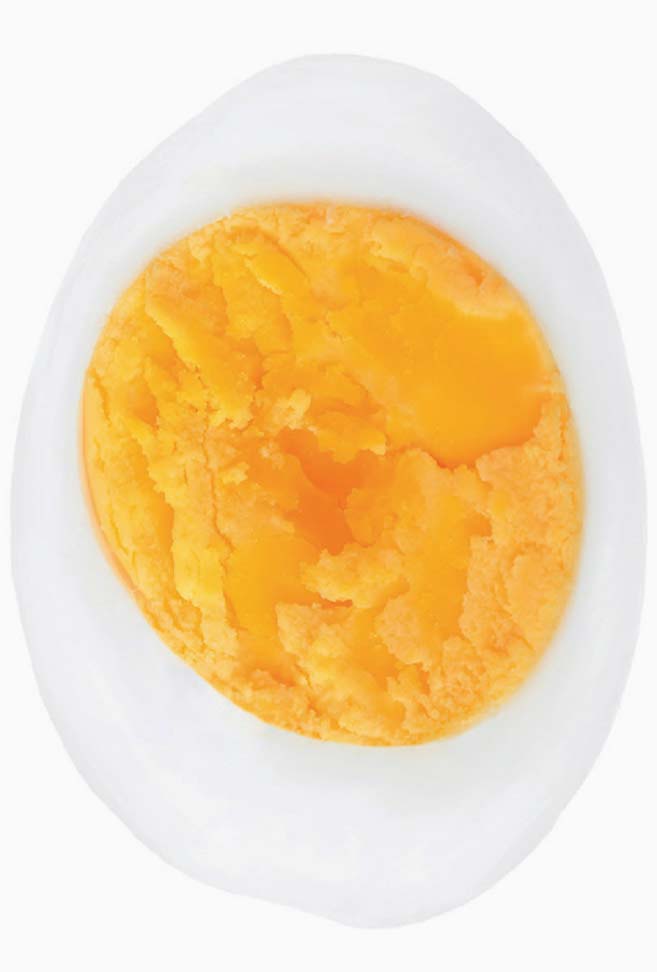
MELLOW YELLOW
The color and quality of an egg’s yolk is determined by diet. Hens allowed to forage on pasture and insects often lay deliciously rich eggs with bright orange yolks.

Lighting the Way
Chickens live by the sun and naturally lay more eggs with 10 or more hours of light a day. A flock that lays a hundred eggs a day in spring may only lay a few eggs during an entire week in winter. Why are eggs plentiful year ‘round? To trick the ladies into year-round high volume production, larger scale and factory farms keep birds indoors under artificial lights.
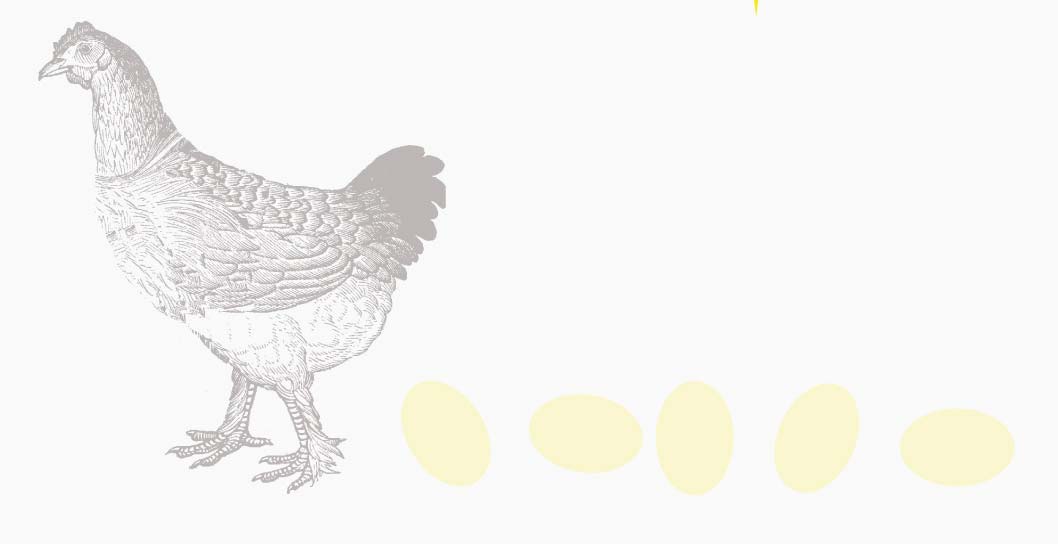
IS IT A GOOD EGG?
If in doubt about an egg’s freshness, use this quick and easy test: Place the egg in a bowl filled with cold water. If it sinks to the bottom and lies flat on its side, the egg is still fresh and fine to eat. If it floats to the top, it has definitely gone bad. If the egg stands up on its end from the bottom of the bowl, it’s not completely fresh but still edible.


